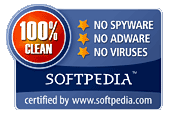Ready for Installation downloads
Below you find the latest WinFIG downloads by platform (installer and zipped versions):
release 2024.2
- Windows Installer version WinFIG-2024-2.exe

- Windows zipped version WinFIG-2024-2.zip

- Linux Installer version for 64bit systems WinFIG-2024-2-Linux-x86_64-Install

- Linux zipped version for 64bit systems WinFIG-2024-2_linux_64.zip

- Mac OS DMG WinFIG-2024-2.dmg

release 2024.1
- Windows Installer version WinFIG-2024-1.exe

- Windows zipped version WinFIG-2024-1.zip

- Linux Installer version for 64bit systems WinFIG-2024-1-Linux-x86_64-Install

- Linux zipped version for 64bit systems WinFIG-2024-1_linux_64.zip

- Mac OS DMG WinFIG-2024-1.dmg

release 2023.2
- Windows Installer version WinFIG-2023-2.exe

- Windows zipped version WinFIG-2023-2.zip

- Linux Installer version for 64bit systems WinFIG-2023-2-Linux-x86_64-Install

- Linux zipped version for 64bit systems WinFIG-2023-2_linux_64.zip

- Mac OS DMG WinFIG-2023-2.dmg

release 2023.1
- Windows Installer version WinFIG-2023-1.exe

- Windows zipped version WinFIG-2023-1.zip

- Linux Installer version for 64bit systems WinFIG-2023-1-Linux-x86_64-Install

- Linux zipped version for 64bit systems WinFIG-2023-1_linux_64.zip

- Mac OS DMG WinFIG-2023-1.dmg

release 2021.1
- Windows Installer version WinFIG-2021-1.exe

- Windows zipped version WinFIG-2021-1.zip

- Linux Installer version for 64bit systems WinFIG-2021-1-Linux-x86_64-Install

- Linux zipped version for 64bit systems WinFIG-2021-1_linux_64.zip

- Mac OS DMG WinFIG-2021-1.dmg

release 7.8
- Windows Installer version WinFIG78.exe

- Windows zipped version WinFIG78.zip

- Linux Installer version for 64bit systems WinFIG-78-Linux-x86_64-Install

- Linux zipped version for 64bit systems WinFIG78_linux_64.zip

- Mac OS DMG WinFIG78_Qt515.dmg

release 7.7
- Windows Installer version WinFIG77.exe

- Windows zipped version WinFIG77.zip

- Linux Installer version for 64bit systems WinFIG-77-Linux-x86_64-Install

- Linux zipped version for 64bit systems WinFIG77_linux_64.zip

- Mac OS DMG (10.12, Sierra) WinFIG77.dmg

Last 2018 release 7.5
- Windows Installer version WinFIG75.exe

- Windows zipped version WinFIG75.zip

- Linux Installer version for 64bit systems WinFIG-75-Linux-x86_64-Install

- Linux zipped version for 64bit systems WinFIG75_linux_64.zip

- Mac OS (10.8, Mountain Lion) zipped version WinFIG75.app.zip

Windows Installation:
Download and execute the Windows installer version and follow the instructions of the setup program.
Alternatively you can download the zipped version and unpack the archive to a place of your choice, e.g. C:\Program Files\WinFIG
Note: you can have different versions on your computer if you install them to different locations, i.e. install the old WinFIG 3.x into C:\Program Files\WinFIG3.
WinFIG requires some DLLs from the Visual Studio 2019 redistributable. Usually these are already on your computer, if you already installed other recent software. If WinFIG shows a Windows error message at startup (DLL is missing, configuration error or similar) download and install the package, which you can get from Microsoft here.
Linux Installation:
Download and execute WinFIG-72-Linux-x86_64-Install and follow the instructions of the setup program. You must make the file executable in order to run it. Use the following command at the command line:
chmod u+x WinFIG-72-Linux-x86_64-Install
Alternatively you can download the zipped version and unpack the archive to a place of your choice, e.g. /home/username/WinFIG
Please check the requirements page. You may have to install the Qt libraries.
Mac OS Installation:
Download WinFIG72.app.zip. Unzip and copy the containing WinFIG.app folder to a location of your choice, i.e. “/Applications”. Since version 6.0 WinFIG comes as an app bundle with all required dependencies contained within. So, no installation of XCode or Qt is necessary.
Fonts
I prepared a set of PostScript 1.0 fonts from GhostScript 8.53. With that WinFIG can display text objects identically to the PostScript export. See the GPL copyright note inside. Without these fonts WinFIG will use the default font, which is Arial. The fonts are only required for Windows. On Linux they are usually part of the base installation or installed as a dependency of GhostScript.
WinFIG_fontspack_1.0.zip (1595 KB)
Installation:
- Download the archive WinFIG_fontspack_1.0.zip
- Open the old control panel (open the start menu search field and type “control panel”)
- Click on “Fonts” or search for “Fonts”.
- Click on “show installed fonts” to see the font list.
- Drag all PFM files into that window.
Libraries
You can find a symbol library as part of the Xfig source package at the xfig.org site. Download xfig.3.2.7a.full.tar.gz
There is a folder “Libraries” in the archive. Copy the contents to the libraries folder of your WinFIG installation.
Source downloads
You may clone the fig2dev repository at https://gitlab.com/aschmidt-berlin/fig2dev.git
(note: repo name was renamed from transfig to fig2dev)
There your find the source code of fig2dev. This should help people, who want to provide their own output driver or compile the code with specific options. I include the Visual Studio 2015 project file (fig2dev.vcxproj) that I use on Windows and the QT Creator project file (fig2dev.pro) that I use on Linux. The latter should work on Windows too, but then you will have to deal with some “#ifdef Win32” that encapsulate code that requires the Win32 API, mostly for registry access functions. Please also note that fig2dev is mostly written in obsolete pre ANSI-C style. I only fixed this where it led to compiler errors or other issues.
The code requires the QT libraries for bitmap image loading. Don’t forget to make the Qt image plugins available if you are not using the WinFIG folder structure. You have to place the directory plugins/imageformats in the place where you put your compiled fig2dev binary.


